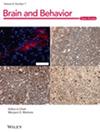Chronotype Predicts Body Mass Index via Emotion Regulation Strategy Use and Emotional Eating
Abstract
Introduction
Rates of obesity are increasing across all regions representing a critical public health concern. An evening chronotype has been associated with elevated body mass index and a less nutritious diet. However, the mechanisms underpinning the relationship between chronotype and body mass index remain unclear. The aim of the current study was to investigate if chronotype is indirectly associated with body mass index via emotion regulation strategy use and emotional eating.
Method
Participants completed the Morningness-Eveningness Questionnaire to assess chronotype, the Emotion Regulation Questionnaire to assess habitual emotion regulation strategy use, the Warwick-Edinburgh Mental Well-being Scale to assess mental well-being, and the Three-Factor Eating Questionnaire to provide a measure of emotional eating. Participants reported their weight and height to allow body mass index to be calculated. Structural equation modeling tested the predicted indirect association between chronotype and body mass index via emotion regulation strategy use and emotional eating.
Results
Chronotype was indirectly associated with body mass index via emotion regulation strategy use and emotional eating. As predicted, individuals with an evening chronotype tended to report greater use of expressive suppression, which was associated with a greater tendency to emotionally eat and a higher body mass index (p = 0.008). In contrast, individuals with a morning chronotype reported more frequent use of cognitive reappraisal, which was associated with reduced emotional eating and a lower body mass index (p = 0.003). The direct pathway between chronotype and body mass index was non-significant (p = 0.821).
Conclusion
These findings suggest a clear pathway through which chronotype might be associated with body mass index, with evening chronotypes at a greater risk of weight gain. Our results suggest that it is not the independent influence of emotion regulation strategy use or emotional eating on its own that is important in the association between chronotype and body mass index, but the combined sequential effect of a general tendency towards an emotion regulation strategy and then the impact this has upon emotional eating that is important. The findings highlight the importance of considering emotion regulation strategy use and emotional eating when designing interventions or therapies aimed at reducing obesity.


 求助内容:
求助内容: 应助结果提醒方式:
应助结果提醒方式:


